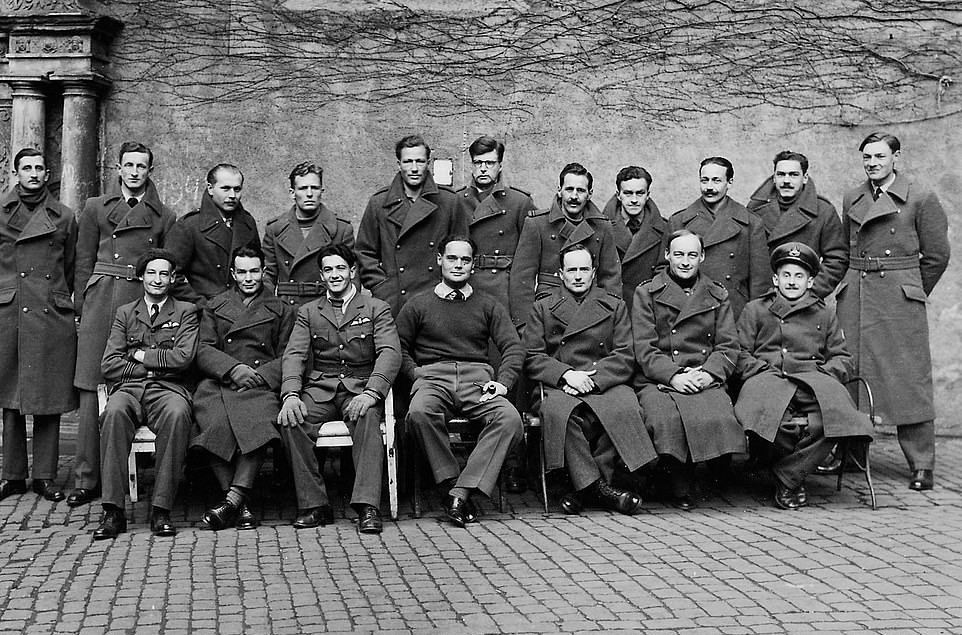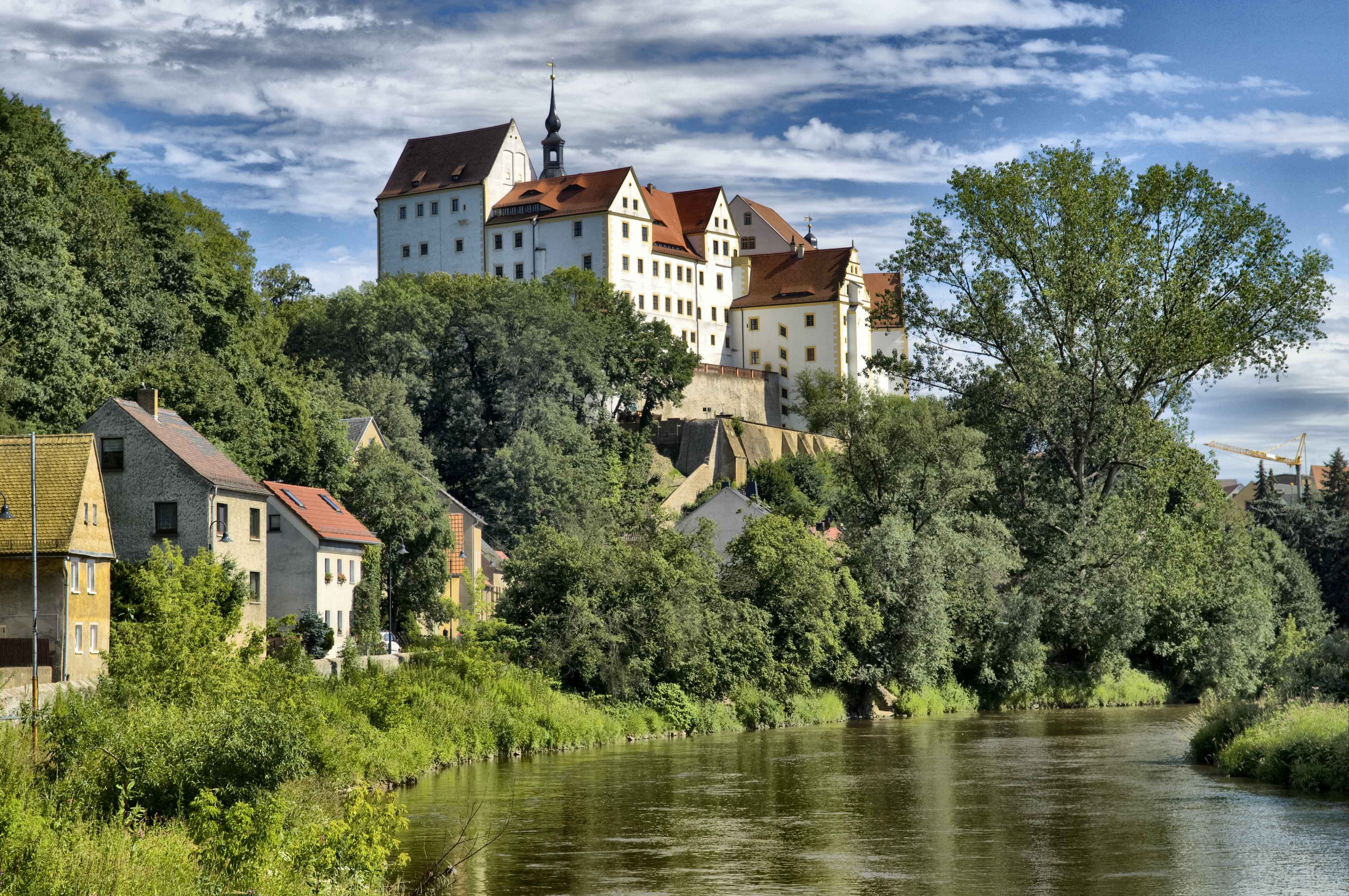|
Oflag IV-C
Oflag IV-C, generally known as Colditz Castle, was a prominent German Army prisoner-of-war camp for captured Allied officers during World War II. Located in Colditz, Saxony, the camp operated within the medieval Colditz Castle, which overlooks the town. The word "Oflag" is an abbreviation of the German term ''Offizierslager'', meaning "officers' camp." The camp held officers who were deemed escape risks or who had already attempted escape from other prison camps. Known for its seemingly impenetrable structure, Colditz Castle became a site of numerous escape attempts, some of which were successful, earning a reputation for the ingenuity and daring of its prisoners. The camp's history and the elaborate escape plans conceived there have been widely covered in postwar memoirs, books, and media. Today, Colditz Castle has become a popular tourist destination, with guided tours, exhibitions and a museum dedicated to the prisoners' life. Colditz Castle This thousand-year-old fortress was ... [...More Info...] [...Related Items...] OR: [Wikipedia] [Google] [Baidu] |
Colditz
Colditz () is a small town in the district of Leipzig (district), Leipzig, in Saxony, Germany. It is best known for Colditz Castle, the site of the Oflag IV-C prisoner-of-war camp, POW camp for officers in World War II. Geography Colditz is situated in the Leipzig Bay, southeast of the city of Leipzig. The town centre is located on the banks of Zwickau Mulde river, south of its confluence with the Freiberger Mulde, Freiberg Mulde. The municipality had a population of 8,374 in 2020. The town Colditz consists of Colditz proper and the ''Ortsteile'' (divisions) Bockwitz, Collmen, Commichau, Erlbach, Erlln, Hausdorf, Hohnbach, Kaltenborn, Koltzschen, Lastau, Leisenau, Maaschwitz, Meuselwitz, Möseln, Podelwitz, Raschütz, Schönbach, Sermuth, Skoplau, Tanndorf, Terpitzsch, Zollwitz, Zschadraß, Zschetzsch and Zschirla. History The first record of a burgward on the Mulde river, called ''Cholidistcha'', dates to the year 1046, when Emperor Henry III, Holy Roman Emperor, Henry III dedi ... [...More Info...] [...Related Items...] OR: [Wikipedia] [Google] [Baidu] |
Reinhold Eggers
Reinhold Eggers (1890–1974) was the security officer at Oflag IV-C from November 1940 to April 1945, promoted to chief of security in 1944. The Nova television programme ''Nazi Prison Escape'', a shortened cut of a British documentary series, was based on his books about Colditz. He spent 10 years in Soviet-ordered imprisonment following the war and was released in 1955. Pre-World War II In March 1913, Eggers was called up for military service and was, on his request, posted to the 2nd Battalion of Marine Infantry ('' Seebataillon'') at Wilhelmshaven. His battalion commander was the famed Paul Emil von Lettow-Vorbeck, who after six months personally promoted Eggers to ''Gefreiter''. Eggers completed his training on 31 March 1914 and was promoted to the rank of ''Unteroffizier''. After the outbreak of World War I he was ordered to join the First Regiment of Marine Infantry at Kiel. He was subsequently posted on the western front where he won the Iron Cross Second Class on 8 May ... [...More Info...] [...Related Items...] OR: [Wikipedia] [Google] [Baidu] |
Oflag IV-B Koenigstein
An Oflag (from ) was a type of prisoner of war camp for officers which the German Army established in World War I in accordance with the requirements of the 1899 Hague Convention, and in World War II in accordance with the requirements of the Geneva Convention (1929). Although officers were not required to work, at Oflag XIII-B (Hammelburg) when the POWs asked to be able to work for more food, they were told the Geneva Convention forbade them from working. In some Oflags a limited number of non-commissioned soldiers working as orderlies were allowed to carry out the work needed to care for the officers. Officers of the Allied air forces were held in special camps called Stalags Luft but were accorded the required preferential treatment. The German Army camp commanders applied the Geneva Convention requirements to suit themselves. An example was as to the amount of food/meat to be provided to each POW. In Oflag XIII-B when a dead horse was brought into the camp, its total we ... [...More Info...] [...Related Items...] OR: [Wikipedia] [Google] [Baidu] |
Arsène Marie Paul Vauthier
Arsène Marie Paul Vauthier (1885-1979) was a French Major General. He was imprisoned in Colditz Colditz () is a small town in the district of Leipzig (district), Leipzig, in Saxony, Germany. It is best known for Colditz Castle, the site of the Oflag IV-C prisoner-of-war camp, POW camp for officers in World War II. Geography Colditz is situa ... from 19 January 1945. References French generals 1885 births 1945 deaths Prisoners of war held at Colditz Castle {{France-mil-bio-stub ... [...More Info...] [...Related Items...] OR: [Wikipedia] [Google] [Baidu] |
Louis Léon Marie André Buisson
Louis Buisson (14 December 1889 – 5 December 1955) was a French Major General. During the battle of France, he was the commander of the from 15 May 1940 and later took command of a battle group comprising the 3rd Armored Division, the and the 10th Polish Armored Brigade. He was imprisoned in Colditz Colditz () is a small town in the district of Leipzig (district), Leipzig, in Saxony, Germany. It is best known for Colditz Castle, the site of the Oflag IV-C prisoner-of-war camp, POW camp for officers in World War II. Geography Colditz is situa ... from 19 January 1945. He survived the war and died in 1955. He first joined the 22nd BCA (Alpine ''chasseurs'' Batalion) as a rank-and-file, where he rose as a corporal then sergent. Sous-lieutenant (2nd Lieutenant) in the reserve of the 13th BCA part of 6th GCC in 1914, he is wounded on 15.11.1914 at Perthes-les-Hurlu. He rose as a lieutenant on 01.04.1915, Captain in october 1917. He majored N°1 from ''l’Ecole de Guerre'' (war ... [...More Info...] [...Related Items...] OR: [Wikipedia] [Google] [Baidu] |
Jean Adolphe Louis Robert Flavigny
Jean Adolphe Louis Robert Flavigny (1880–1948) was a French general. In May 1940, during the Battle of France, Wehrmacht troops crossed the Meuse near Sedan. Flavigny hesitated to command the beginning of a counterattack during the Battle of Sedan and the French troops lost the battle. He was imprisoned in Colditz Colditz () is a small town in the district of Leipzig (district), Leipzig, in Saxony, Germany. It is best known for Colditz Castle, the site of the Oflag IV-C prisoner-of-war camp, POW camp for officers in World War II. Geography Colditz is situa ... from 19 January 1945. References 1880 births 1948 deaths French generals French military personnel of World War II Prisoners of war held at Colditz Castle {{France-mil-bio-stub ... [...More Info...] [...Related Items...] OR: [Wikipedia] [Google] [Baidu] |
Newspapers
A newspaper is a Periodical literature, periodical publication containing written News, information about current events and is often typed in black ink with a white or gray background. Newspapers can cover a wide variety of fields such as politics, business, sports, art, and science. They often include materials such as opinion columns, weather forecasts, reviews of local services, Obituary, obituaries, birth notices, crosswords, editorial cartoons, comic strips, and advice columns. Most newspapers are businesses, and they pay their expenses with a mixture of Subscription business model, subscription revenue, Newsagent's shop, newsstand sales, and advertising revenue. The journalism organizations that publish newspapers are themselves often Metonymy, metonymically called newspapers. Newspapers have traditionally been published Printing, in print (usually on cheap, low-grade paper called newsprint). However, today most newspapers are also Electronic publishing, published on webs ... [...More Info...] [...Related Items...] OR: [Wikipedia] [Google] [Baidu] |
Florimond Duke
Florimond DuSossoit Duke (October 2, 1895 – April 4, 1969), previously known as Florimond Joseph DuSossoit, was an American football player, magazine executive, and Army officer. He is best known for his 1944 mission parachuting into Hungary as an officer in the Office of Strategic Services (OSS). Early years Duke was born in Rochester, New York, in 1895, as Florimond Joseph DuSossoit. He attended Brookline High School in Massachusetts. He attended Dartmouth College where he played college football in 1915 and 1916. During World War I, Duke was an ambulance driver with the American Field Service. He later became a pilot with the Signal Corps. Duke played professional football for two games in 1921 with the New York Brickley Giants of the National Football League. Magazine executive and OSS service Duke worked for many years as an executive for ''Time'', ''Fortune'', ''Life'', and ''Newsweek'' magazines. He was hired by ''Time'' in 1924 and served as the advertising manage ... [...More Info...] [...Related Items...] OR: [Wikipedia] [Google] [Baidu] |
Free French Forces
__NOTOC__ The French Liberation Army ( ; AFL) was the reunified French Army that arose from the merging of the Armée d'Afrique with the prior Free French Forces (; FFL) during World War II. The military force of Free France, it participated in the Italian and Tunisian campaigns before joining in the Liberation of France with other Western Allies of World War II. It went on to join the Western Allied invasion of Germany. History The French Liberation Army was created in January 1943 when the Army of Africa () led by General Giraud was combined with the Free French Forces of General de Gaulle. The AFL participated in the campaigns of Tunisia and Italy; during the Italian campaign the AFL was known as the French Expeditionary Corps in Italy ( ''en Italie or CEFI)'' making a quarter of the troops deployed. The AFL was key in the liberation of Corsica, the first French metropolitan department to be liberated. The troops that landed 2 months after D-Day were the 2nd A ... [...More Info...] [...Related Items...] OR: [Wikipedia] [Google] [Baidu] |
Grey
Grey (more frequent in British English) or gray (more frequent in American English) is an intermediate color between black and white. It is a neutral or achromatic color, meaning that it has no chroma. It is the color of a cloud-covered sky, of ash, and of lead. The first recorded use of ''grey'' as a color name in the English language was in 700 CE.Maerz and Paul ''A Dictionary of Color'' New York:1930 McGraw-Hill Page 196 ''Grey'' is the dominant spelling in European and Commonwealth English, while ''gray'' is more common in American English; however, both spellings are valid in both varieties of English. In Europe and North America, surveys show that gray is the color most commonly associated with neutrality, conformity, boredom, uncertainty, old age, indifference, and modesty. Only one percent of respondents chose it as their favorite color. Etymology ''Grey'' comes from the Middle English or , from the Old English , and is related to the Dutch and Ger ... [...More Info...] [...Related Items...] OR: [Wikipedia] [Google] [Baidu] |
Greatcoat
A greatcoat (also watchcoat) is a large, woollen overcoat designed for warmth and protection against wind and weather, and features a collar that can be turned up and cuffs that can be turned down to protect the face and the hands, while the Cape, short rain-cape at the shoulders protects from the wind and repels rain. In the 19th century, such a coat was part of a soldier's military uniform, to be worn while on watch (guard duty), hence the term ''watchcoat''. The drape of the greatcoat reached to below the knee of the wearer, the short cape drapes to the elbow, and the capacious external pockets allow the wearer to carry dry food and other items; an example is the ''Petersham coat'', named after Charles Stanhope, 4th Earl of Harrington, Viscount Petersham. In the fashion of the Regency era (1795–1837) a greatcoat might feature several short capes, usually designed, cut, and Tailoring, tailored to the specifications of fit and Taste (sociology), aesthetic taste of a dandy. [...More Info...] [...Related Items...] OR: [Wikipedia] [Google] [Baidu] |




